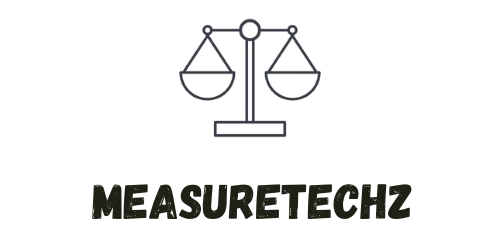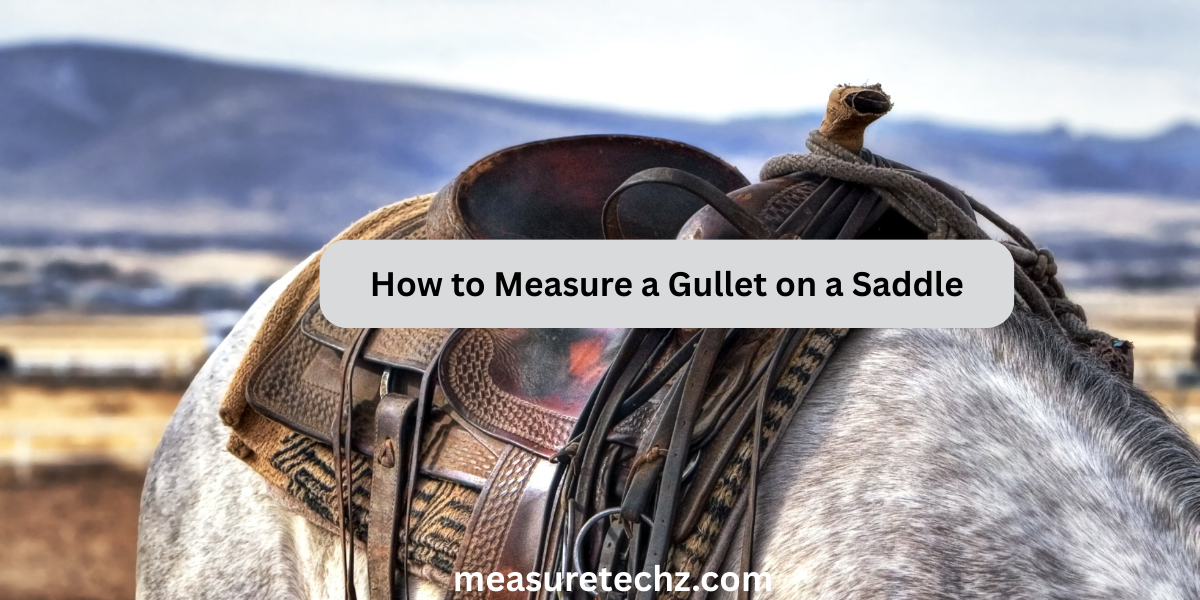If you’ve ever wondered why your horse seems uncomfortable or why your saddle doesn’t sit quite right, it might be due to an incorrectly sized gullet. The gullet is the part of the saddle that runs along the horse’s spine, and its size plays a crucial role in ensuring both horse and rider comfort. A saddle with the wrong gullet size can cause pressure points, soreness, and even long-term injury to your horse.
In this guide, you’ll discover how to measure a gullet on a saddle, why it matters, and how to ensure a proper fit whether you’re buying a new saddle or checking an existing one. Whether you’re a beginner or a seasoned rider, this comprehensive guide will give you all the insights you need.
How to Measure a Saddle’s Gullet the Easy Way

how to measure a gullet on a saddle, just flip the saddle upside down and grab a measuring tape. Look for the widest part between the two panels underneath the front of the saddle this is where you’ll measure. Take the measurement from one side to the other in a straight line.
This number tells you the gullet width, which helps you figure out if the saddle will fit your horse comfortably. A proper fit means less pressure on your horse’s back and a better ride for both of you.
What Is the Gullet on a Saddle?
The gullet is the tunnel that runs down the center of the underside of a saddle. It sits above your horse’s spine and protects it from the weight of the saddle and rider. A properly fitted gullet ensures that the saddle distributes pressure evenly across your horse’s back, avoiding contact with the spine.
Why Gullet Width Is Crucial
- Comfort for the horse – Prevents back pain and discomfort.
- Safety for the rider – Maintains balance and saddle stability.
- Correct posture – Promotes natural movement and performance.
- Prevents long-term damage – Avoids issues like white spots or muscle atrophy.
Types of Saddle Gullets
Before measuring, it’s helpful to know the different gullet size standards:
- Narrow (5 inches or less)
- Medium (5.5 to 6 inches)
- Wide (6 to 6.5 inches)
- Extra Wide (6.75 inches or more)
Note: English and Western saddles measure gullets differently. English saddle gullets are measured between the points of the tree, while Western saddle gullets are measured at the conchos or just below the fork.
Tools You’ll Need to Measure a Gullet
- A flexible tape measure or ruler
- Saddle stand or stable surface
- Camera (optional—for documentation)
- Pen and notebook (to jot down your results)
How to Measure a Gullet on a Saddle: Step-by-Step
🐴 For Western Saddles
Western saddle gullets are measured at the front of the saddle, just under the fork (swells).
- Place the saddle on a stable stand or sawhorse.
- Locate the conchos or below the fork.
- This is typically where the gullet is at its widest.
Use a measuring tape to measure from one side of the gullet to the other, straight across.
-
-
Do not include the skirt or fleece just the inside of the bars.
-
-
Record the measurement in inches.
💡 Example: A gullet width of 7 inches typically indicates a Full Quarter Horse Bar saddle.
| Measurement (inches) | Gullet Size | Fit Type |
|---|---|---|
| 5″ | Narrow | Pony or slender horse |
| 6″ | Semi QH Bars | Average horses |
| 7″ | Full QH Bars | Broad horses |
| 8″ or more | Draft or Extra Wide | Large or draft breeds |
🐎 For English Saddles
English saddle gullets are usually measured between the tree points under the pommel.
- Turn the saddle upside down or place it pommel-side up.
- Locate the two points of the tree.
- Measure straight across from point to point inside the saddle panels.
- Record your measurement.
English gullet sizes often range from Narrow (N) to Extra Wide (XW) and are sometimes labeled with centimeters.
Common Saddle Fit Problems Related to Gullet Size
Too Narrow:
- Pinches the withers
- Causes soreness or white hairs
- Restricts shoulder movement
Too Wide:
- Sits too low on the withers
- Rocks or shifts during riding
- Causes spine pressure
How to Know If Your Saddle Fits Properly
You’ve measured the gullet but how can you confirm that your saddle truly fits?
Use the 3-Finger Rule:
Place three fingers between your horse’s withers and the saddle. If it’s tighter or looser than that, the gullet may be too narrow or too wide.
Look for Physical Signs:
- Dry patches under the saddle pad
- White hair marks near the withers
- Behavioral issues during saddling or riding
Use a Professional Saddle Fitter:
Certified saddle fitters use specialized tools and offer expert assessments for both horse and rider.
Adjustable Gullets: Are They Worth It?
Many modern saddles, especially English styles, offer interchangeable gullet systems. These allow you to swap out the gullet plate to accommodate different horses or adjust to body changes in your horse over time.
Pros:
- Flexibility for multi-horse riders
- Long-term cost savings
- Adjustable to seasonal body changes
Cons:
- May still not provide a perfect fit
- Can be complex to change correctly
Brands like Wintec, Bates, and Thorowgood are popular for adjustable gullet systems.
Real-World Case Study: How Correct Gullet Sizing Changed the Ride
Emma, an amateur eventer, struggled with her Thoroughbred rejecting the saddle. After measuring the gullet, she discovered it was too narrow. Switching to a wider gullet and using a saddle fitter improved her horse’s posture, attitude, and movement instantly. Her performance improved within weeks, and her horse showed no more soreness after rides.
Visual Aids: Recommended Images
To enhance this guide, include the following visuals:
- Diagram of saddle anatomy (highlighting the gullet)
- Image showing where to measure gullet width on a Western saddle
- Image showing where to measure gullet width on an English saddle
- Before-and-after photos of poor vs. proper saddle fit
Conclusion: Get the Perfect Fit Every Time
Understanding how to measure a gullet on a saddle is essential for any horse rider who values comfort, safety, and performance. Whether you ride Western or English, knowing the correct gullet size can prevent discomfort, avoid injury, and enhance your horse’s performance. Don’t leave it to guesswork measure with confidence and consider consulting a professional when needed.
✅ Next Step: Measure your current saddle today or consult a certified saddle fitter to ensure your horse is riding in comfort.

